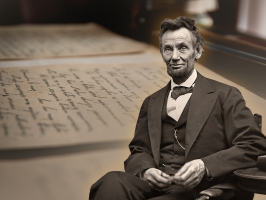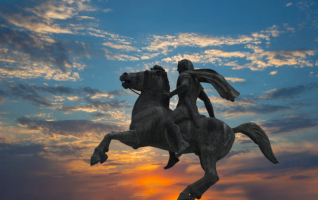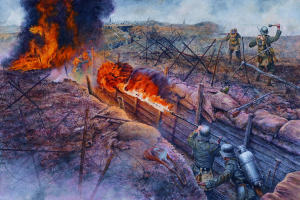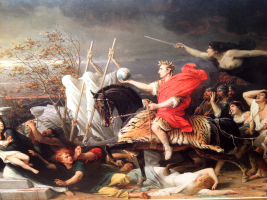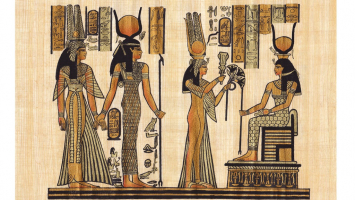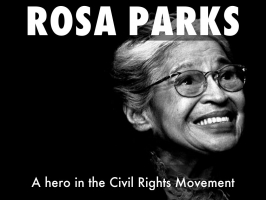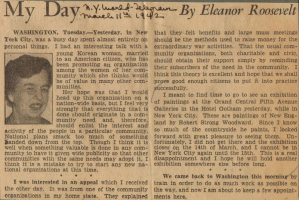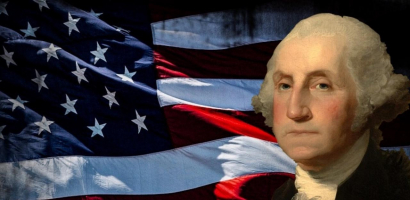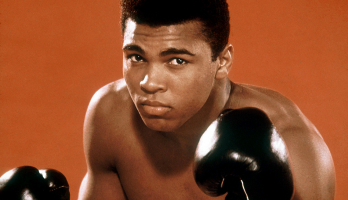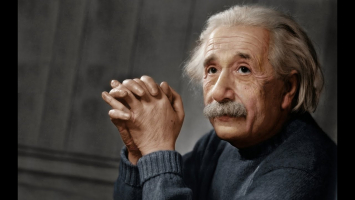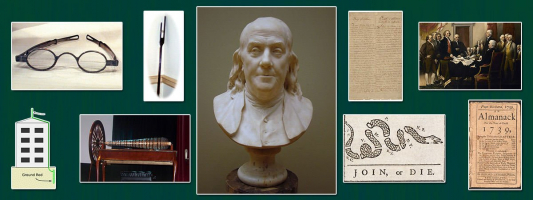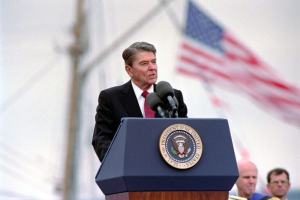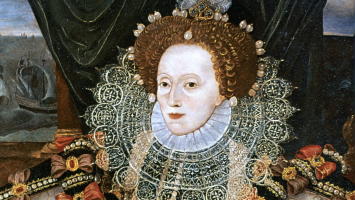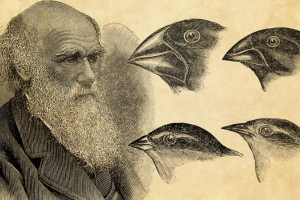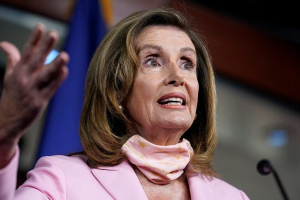Top 10 Forgotten Accomplishments of the Lincoln Administration
Lincoln maintained the Union victory as his first concern throughout his presidency, but he also paid attention to the affairs of the United States. The US ... read more...economy expanded during his presidency. West Virginia and Nevada were added as two additional states. The President needed to focus on a number of things, including infrastructure, finance, education, and national development. Here are a few of the less well-known Lincoln Administration achievements that weren't directly related to the North-South conflict.
-
The Thanksgiving holiday, which is mostly celebrated by Pilgrims, turkeys, Black Friday, and football, is not typically linked with Abraham Lincoln. But through a presidential proclamation issued in October 1863, President Lincoln was the one who originally declared Thanksgiving a national holiday. Lincoln declared a national holiday that year, suspending all daily activities on the last Thursday in November "as a day of Thanksgiving and Praise." No national Thanksgiving holiday had been observed until Lincoln's proclamation.
Sometimes November has five Thursdays. In those situations, the Christmas season was impacted by Thanksgiving celebrations on the final Thursday of November. Thanksgiving was seen as the start of the holiday season and shopping by the 1930s. The holiday was shifted to the fourth Thursday of the month in 1939 by President Franklin D. Roosevelt because the last Thursday in November fell on November 30.
He was able to do this because Congress left it up to the President's discretion to choose the date in his yearly proclamation when it declared Thanksgiving a permanent national holiday in 1870. Congress stepped in in 1941 after certain Roosevelt-hating states decided to disregard the President and observe the holiday on the final Thursday. Thanksgiving, first observed nationally by Abraham Lincoln in 1863 and then again in 1864, became a statutory holiday after Congress approved legislation establishing it as the fourth Thursday in November. FDR signed the bill, and it became effective.
https://world.celebrat.net 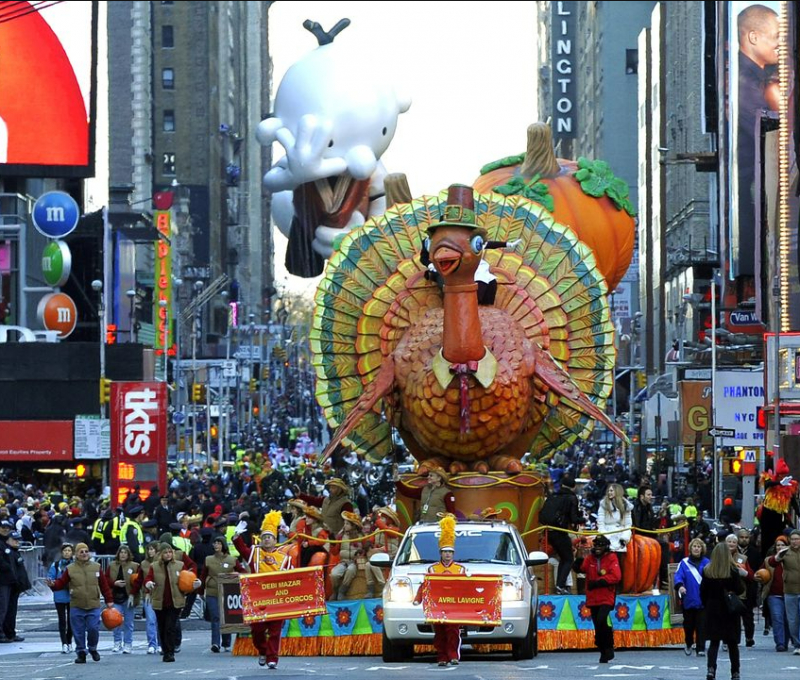
https://dailyroabox.com -
The Homestead Act of 1860 was created by Congress in 1860 because they wanted to encourage people to settle on federally owned lands in the west. President Buchanan, a Democrat, vetoed the bill because it was opposed by Southern Democrats who wanted western properties to be available for acquisition by slave owners. Congress enacted the Homestead Act of 1862 after the Southern states declared their secession and Lincoln supported the idea. On May 20, 1862, Lincoln officially signed the bill into law. The largest land giveaway in history may have resulted from it. The act resulted in the free distribution of about 10% of the country's land to eligible individuals.
The requirements weren't all that strict. As long as a person had not used force against the United States and was at least 21 years old or the head of a household, they were eligible. He was granted a patent for 160 acres, largely in the west, in exchange for his commitment to settling on and improving the land. Families with multiple adults could each claim a separate patent, adjacent to their siblings' possessions. Other than expenses for transportation, building, farm machinery, livestock, and so on, there was only a filing fee. The homesteader might receive title and land ownership after fulfilling the period of the homestead requirement, often 20 years.
Through 1.6 million homesteads, the federal government transferred approximately 270 million acres of property to private hands. The wide-open spaces of the west gave rise to the farms of today. Homesteading persisted in the lower states up until 1976 and for an additional ten years in Alaska. The Homestead Act was later imitated in Canada, Australia, and New Zealand. Throughout its lengthy tenure in effect, it underwent numerous amendments and adjustments.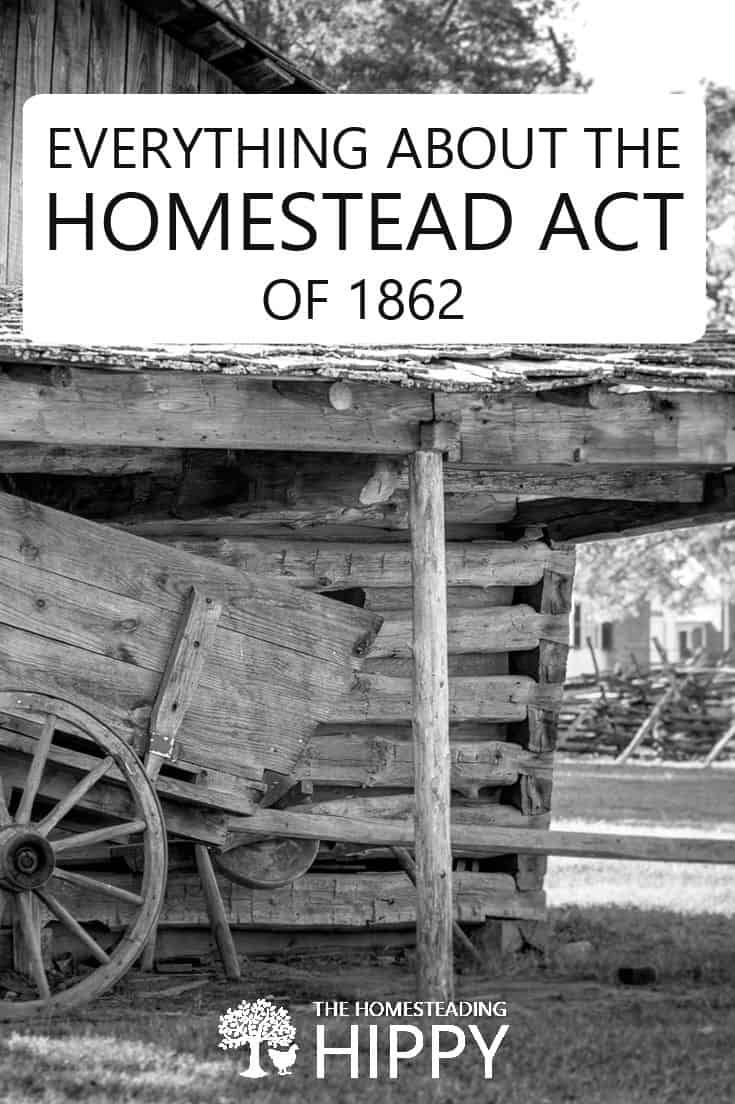
https://thehomesteadinghippy.com 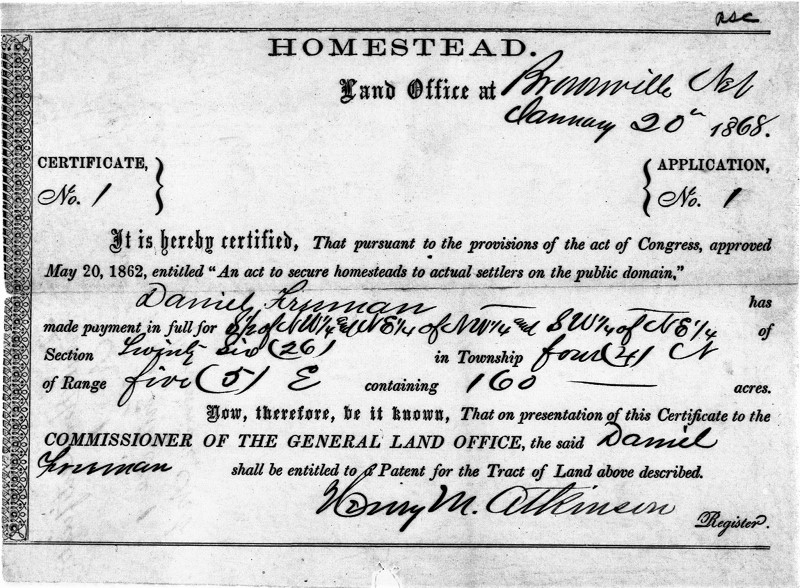
https://constitutingamerica.org/ -
Abraham Lincoln ratified the Pacific Railway Act of 1862 on July 1st. The Act gave two rival railroad companies, the Union Pacific and the Central Pacific, rights of way and gave them the go-ahead to build a railroad that connected Sacramento, California, and Omaha, Nebraska. Starting in Omaha, the Union Pacific laid track in a westward direction. Beginning in Sacramento and moving eastward, the Central Pacific quickly ran against the demoralizing Sierras.
According to the terms of the 1862 Railway Act, both railways were granted public domain land on each side of the rails they built. Per mile of tracks installed and the level of difficulties faced during construction, loan bonds were computed. In Sacramento, work started in January 1863, and the two companies competed to build the most track. Another Pacific Railway Act was approved by Congress in 1864, substantially tripling the amount of land granted to the two companies and enabling them to collect money on their own by issuing bonds for the building of railroads.
Before the Transcontinental Railroad was finished in 1869, it had taken six years, and Abraham Lincoln, a longtime supporter of the Pacific Railway, had passed away for more than four years. But it remained a monument to his faith in racial harmony. Lincoln worked to bring the East and West together using the most advanced technologies available at the time, despite the fact that the Civil War plagued his government. One of the biggest freight transporters in the country, the Union Pacific Railroad, is still in operation. In 1959, the Southern Pacific Railroad absorbed the Central Pacific.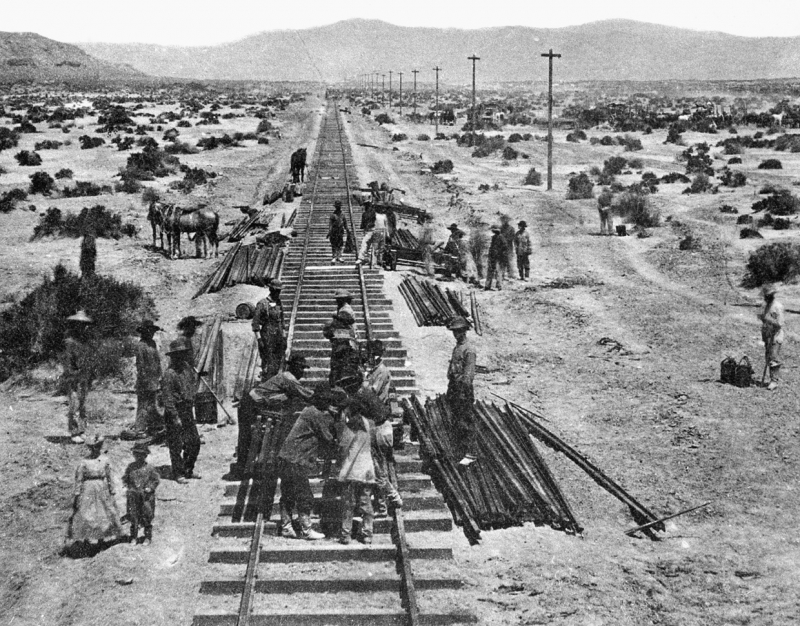
https://www.thinglink.com/ 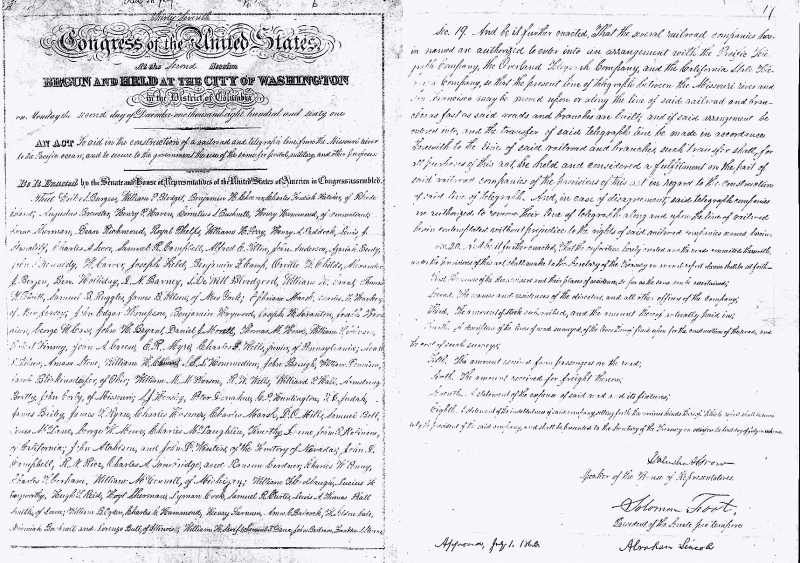
https://gorail.org/infrastructure/ -
There was no central banking system in America after President Andrew Jackson abolished the Second Bank of the United States. Instead, there were numerous state-chartered banks scattered around the nation that printed their own currency. Salmon P. Chase, Lincoln's Treasury Secretary, and Senator John Sherman, the brother of General William Tecumseh Sherman, collaborated to establish a centralized banking system in order to stabilize currencies and provide a market through which to sell government bonds.
The National Bank Act of 1863 was the result of their efforts. The act established national banks—banks backed by bonds deposited with the government—with charters and oversight from the federal government. The government limited the quantity and kinds of loans that National Banks may issue, and the banks issued the national currency through their branches. State-chartered banks were still permitted to print their own banknotes, but the 1863 Act added a 10% levy to them, making them prohibitively expensive to use and hastening their demise.
Thus, a stable national currency was adopted, most of the corruption present in state-chartered banks was eradicated, and a modern national banking system was established by the National Bank Act of 1863, which was revised the following year. State-issued banknotes had all but disappeared by the end of the American Civil War and had been replaced by US government-issued paper money. Abraham Lincoln's Presidency was also responsible for the development of the modern banking system.
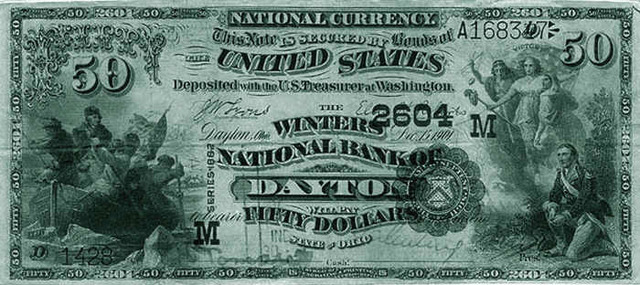
https://www.timetoast.com 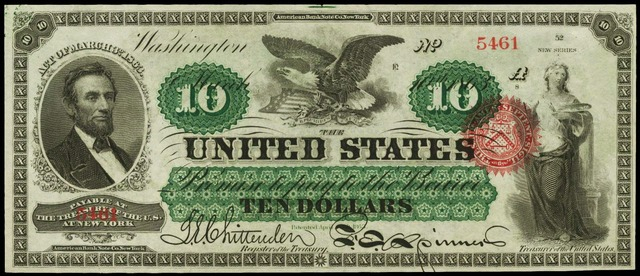
https://www.timetoast.com/ -
Today, the United States is fortunate to have 59 National Parks and more than 6,000 State Parks that are preserved for pleasure rather than for the purpose of making money. The Yosemite Grant Act served as the foundation for them. Lincoln signed the measure into law on June 30, 1864, after Congress enacted the act, which had its inception as Senate Bill 203. Despite mandating their usage, the act ceded federal lands to the State of California.
"On the express stipulations that the premises must be held for public use, resort, and leisure," the state received the Yosemite Valley and the Mariposa Tree Grove. The act also stipulated that the state could lease portions of the grant to other organizations, with the condition that the earnings from any such leases be used for the preservation of the properties or for enhancing the roads and trails that provided access to the lands.
What later developed into America's National Parks had their beginnings with Lincoln's actions regarding Yosemite and Mariposa. President Ulysses S. Grant signed the Yellowstone National Park Protection Act, designating Yellowstone as the country's first national park, eight years after Lincoln's move regarding Yosemite. That law's text was heavily influenced by the previous Yosemite Grant Act.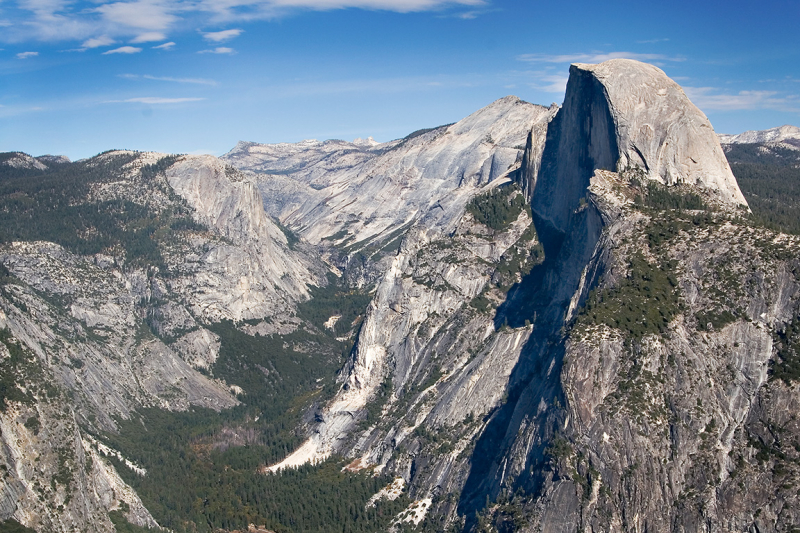
https://www.oars.com/ 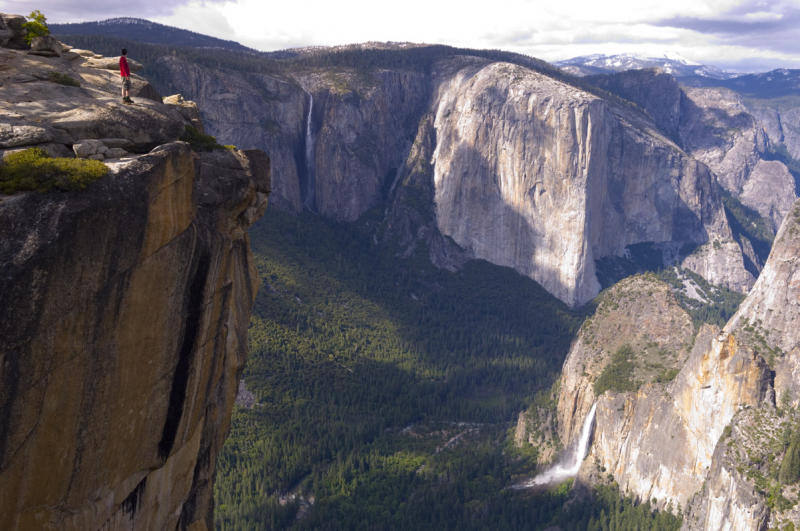
https://www.oars.com -
Congress passed the Revenue Act of 1862 in 1862 after realizing that the Revenue Act of 1861 was useless and unable to collect taxes. On July 1, 1862, President Lincoln officially signed the bill into law. The act's institution of the Commissioner of Internal Revenue was a crucial element. The job of collecting taxes within the US was given to the new commission. A large portion of the levies came from excise taxes on consumer products and services, company earnings, interest on savings and investments, and business licenses.
The Act also replaced the 3% income tax on earnings over $800 with a progressive tax structure. The tax threshold was lowered to $600, and a 3% tax was applied to incomes between that amount and $10,000. 5% of the amount over $10,000 was charged. The tax rate was quite modest compared to those assessed today, with $10,000 in 1862 being equivalent to about $260,000 today. In order to find those who were evading taxes, notably those levied on alcohol and tobacco, the Commissioner recruited three investigators in 1863.
In American history, the idea of a progressive tax was first introduced by the Revenue Act of 1862. After being abandoned in 1872, it was reinstated in 1913 after the 16th Amendment to the Constitution was ratified. The Internal Revenue Service, everyone's favorite branch of the federal government, sprang from the Commissioner of Internal Revenue. The Internal Revenue Service, the nation's favorite department, was originally the Commissioner of Internal Revenue. Today, it employs nearly 75,000 people and has an operating budget of more than $11 billion.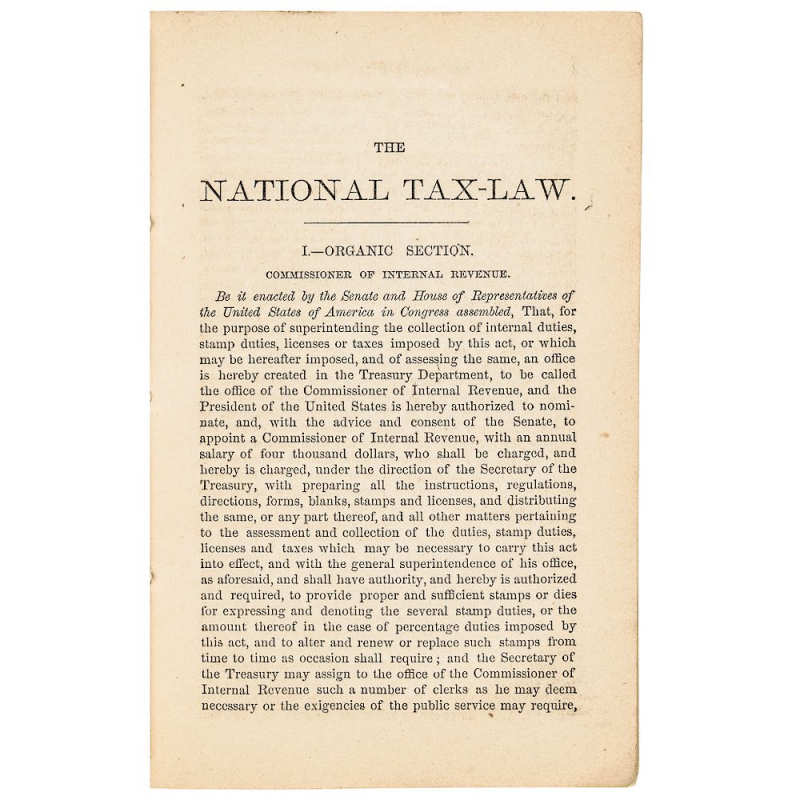
https://www.bidsquare.com 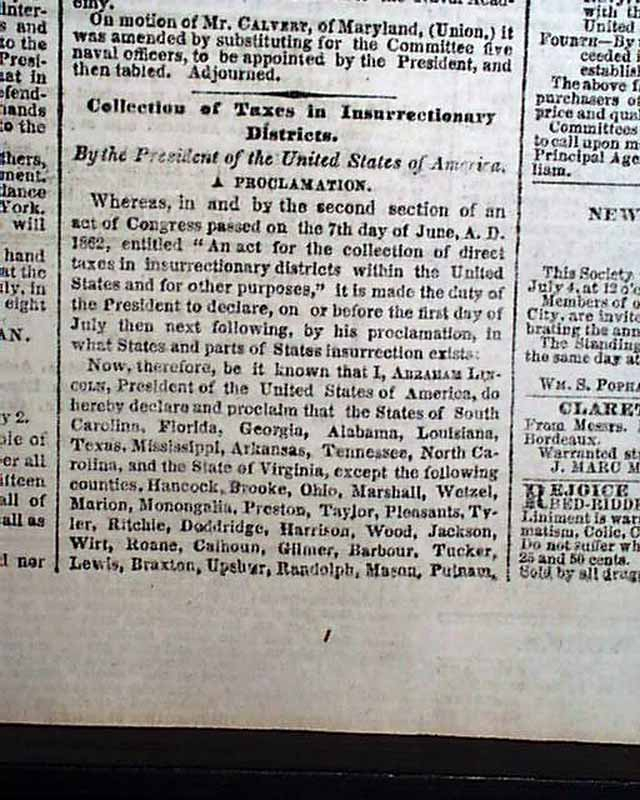
https://www.rarenewspapers.com/ -
The North was primarily agricultural, despite the fact that the states that upheld the Constitution during the Lincoln Administration had a bigger industrial base than the Confederacy. More over half of the population was employed in agriculture-related trades and businesses or worked on farms. Lincoln proposed "The People's Department," a brand-new department of the federal government.
Lincoln stated, "While I offer no suggestions as to details, I venture the judgment that an agricultural and statistical bureau might profitably be created," in his first annual message to Congress on December 3, 1861 (equivalent to today's State of the Union Address). Lincoln requested Congress to enact a law that would have allowed him to establish a Department of Agriculture below the Cabinet level. Lincoln approved the Act on May 15, 1862, after Congress gave its approval.
Isaac Newton was chosen by the president to serve as the first commissioner of agriculture. Newton, a dairy farmer from Pennsylvania, pushed for telegraphing daily weather reports across the country. Additionally, he established an experimental farm in Washington, D.C., on what is now the National Mall, which is visible from Lincoln's White House, for the study of novel crops and agricultural practices. Lincoln's law continues to serve as the legal framework under which the Department of Agriculture is currently governed. It was given full Cabinet rank in 1889.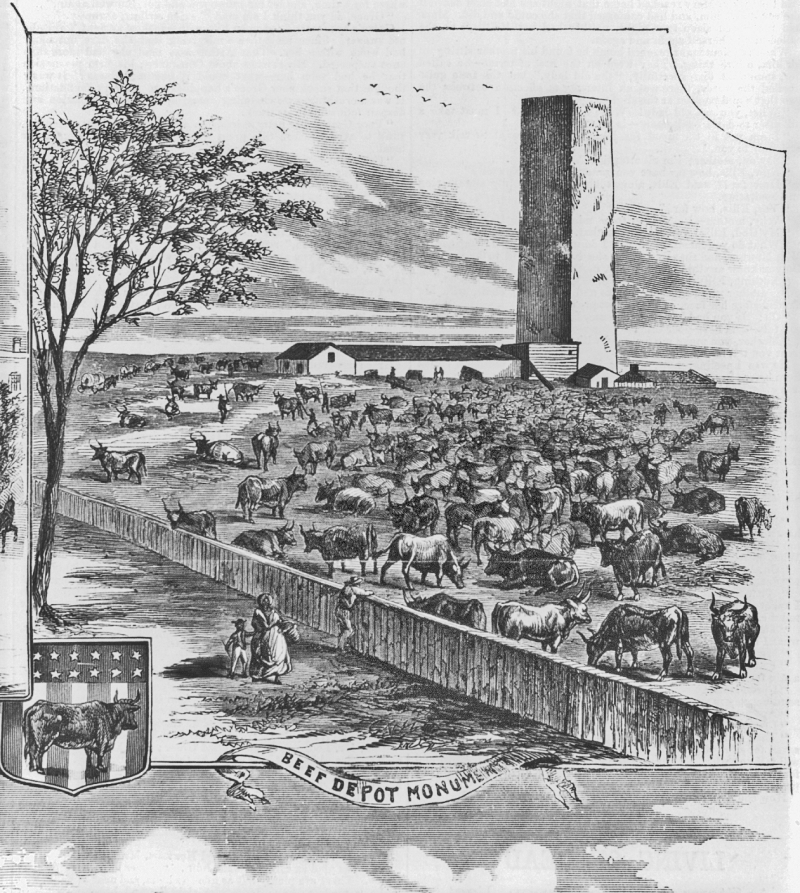
http://www.streetsofwashington.com/ 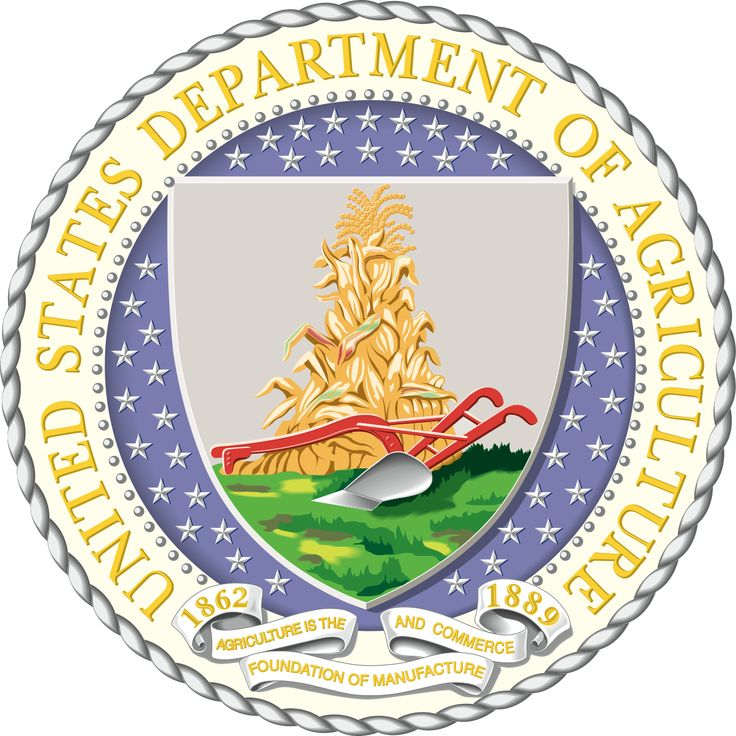
https://www.pinterest.com/ -
In 1859, Congress approved the Morrill Land-Grant Act for the first time. The legislation failed to get enough support in the Southern states to override President James Buchanan's veto. Lincoln, who backed the legislation, saw it through Congress once more in 1862, and on July 2nd, 1862, he signed it into law. In 1890, it was later extended. According to the law as it was enacted in 1862, a state was given 30,000 acres of federal land in exchange for each of its senators and representatives in Congress. The states were given the land to build colleges and universities that would focus on teaching agriculture and industry, as well as "other scientific and classical subjects."
In 1859, Congress approved the Morrill Land-Grant Act for the first time. The legislation failed to get enough support in the Southern states to override President James Buchanan's veto. Lincoln, who backed the legislation, saw it through Congress once more in 1862, and on July 2nd, 1862, he signed it into law. In 1890, it was later extended. According to the law as it was enacted in 1862, a state was given 30,000 acres of federal land in exchange for each of its senators and representatives in Congress. The states were given the land to build colleges and universities that would focus on teaching agriculture and industry, as well as "other scientific and classical subjects."
The act gave rise to numerous universities, including Tuskegee University, Auburn University, University of Florida, and Louisiana State University. The Morrill Land-Grant Act may have had the greatest overall impact on American history and culture of any law enacted by an American president.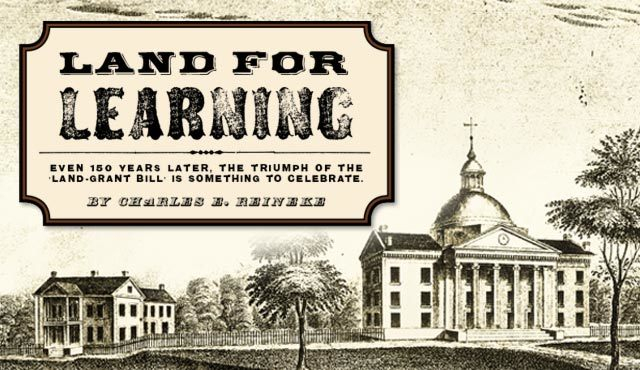
https://www.timetoast.com 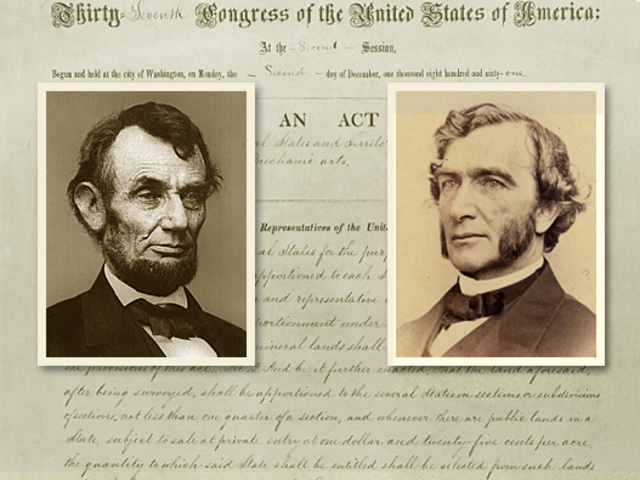
https://media.timetoast.com -
Prior to the Lincoln Administration, tariffs and excise taxes on certain goods, such alcoholic drinks, were the federal government's main sources of income. It became clear during the first year of Lincoln's presidency that the government need a different source of funding in order to cover its expenses and support the war. Lincoln and members of both chambers of Congress worked out an agreement after consulting with his Cabinet, which ultimately became known as the Revenue Act of 1861. The statute was enacted on August 5, 1861, by Lincoln.
Taxes on imports and land ownership were levied under the statute. Additionally, it implemented a tax on personal income for the first time in American history. A flat tax of 3% was applied to all yearly incomes over $800 (about $22,500 in today's dollars). Only approximately 3% of all Americans had incomes over that level, which was bad news for the government. As a result, only a small portion of Americans were impacted by the new income tax, and naturally, the seceded states were completely unaffected.
The new law had no enforcement mechanism and only applied to a small number of Americans. Most citizens who had to pay the levy merely disregarded the regulations. Those who did attempt to pay it discovered that no agency had been established by the government to receive the payments. Therefore, the government received little benefit from the initial income tax. Throughout Lincoln's presidency, Congress was had to bring up the subject again multiple times.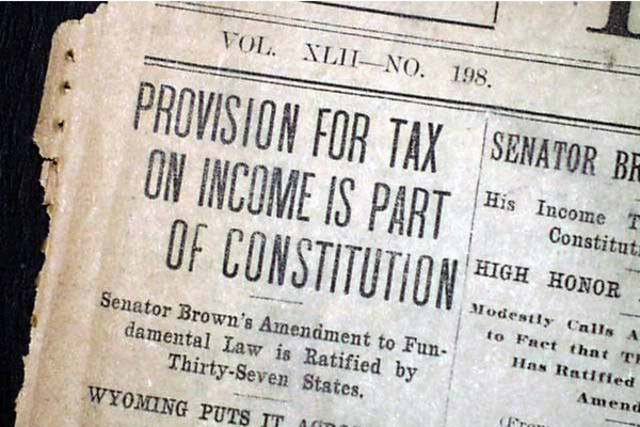
https://www.timetoast.com 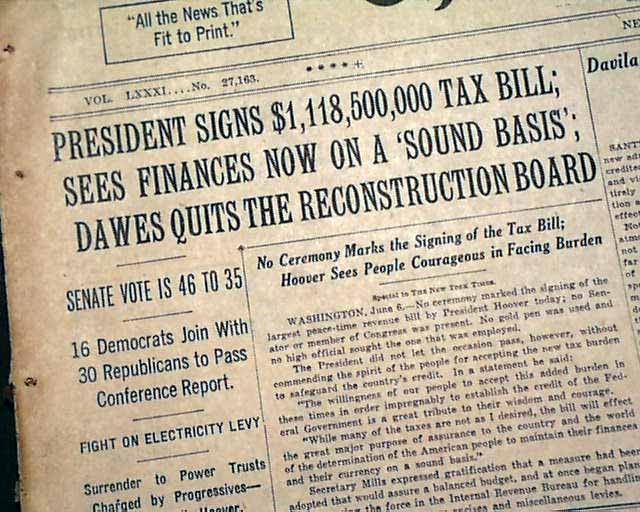
https://revneus.blogspot.com/ -
After being approved by Congress on February 25, 1862, Abraham Lincoln went on to sign the Legal Tender Act of 1862. For the first time, the US government issued paper currency that was not backed by gold and silver reserves kept in the vaults of the Treasury. Due to the color of the ink used on the reverse side of the notes, which was printed in several denominations, the notes came to be known as "greenbacks." "Legal tender in payment of all debts, public and private," was declared for the notes. The government was first permitted to produce notes worth $150 million that were exclusively guaranteed by the federal government's faith and credit.
The printing of paper money didn't kill the American economy, despite the fears of many bankers and financial professionals at the time who thought it would. The influx of cash boosted the economy and banking system. The US economy experienced a boom during the Civil War. Lincoln finally authorized the government to print $500 million in dollars during his Presidency through additional legislation approved by Congress and signed by the president.
Federal banknotes replaced privately issued banknotes as the country's official form of currency. Congress responded by passing new legislation to counteract inflationary pressures when the cash inflow threatened to cause price increases in the economy. Over the subsequent decades, the phrase "greenback" remained a slang term for the dollar.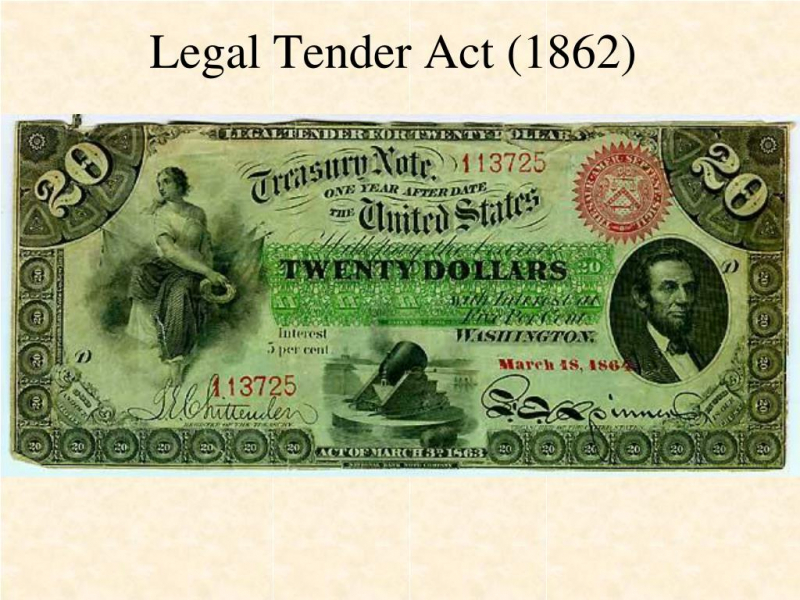
https://www.slideserve.com/ 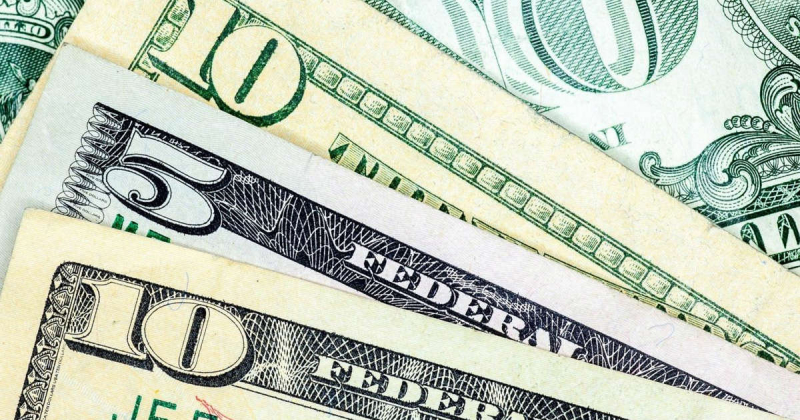
https://www.msn.com/












